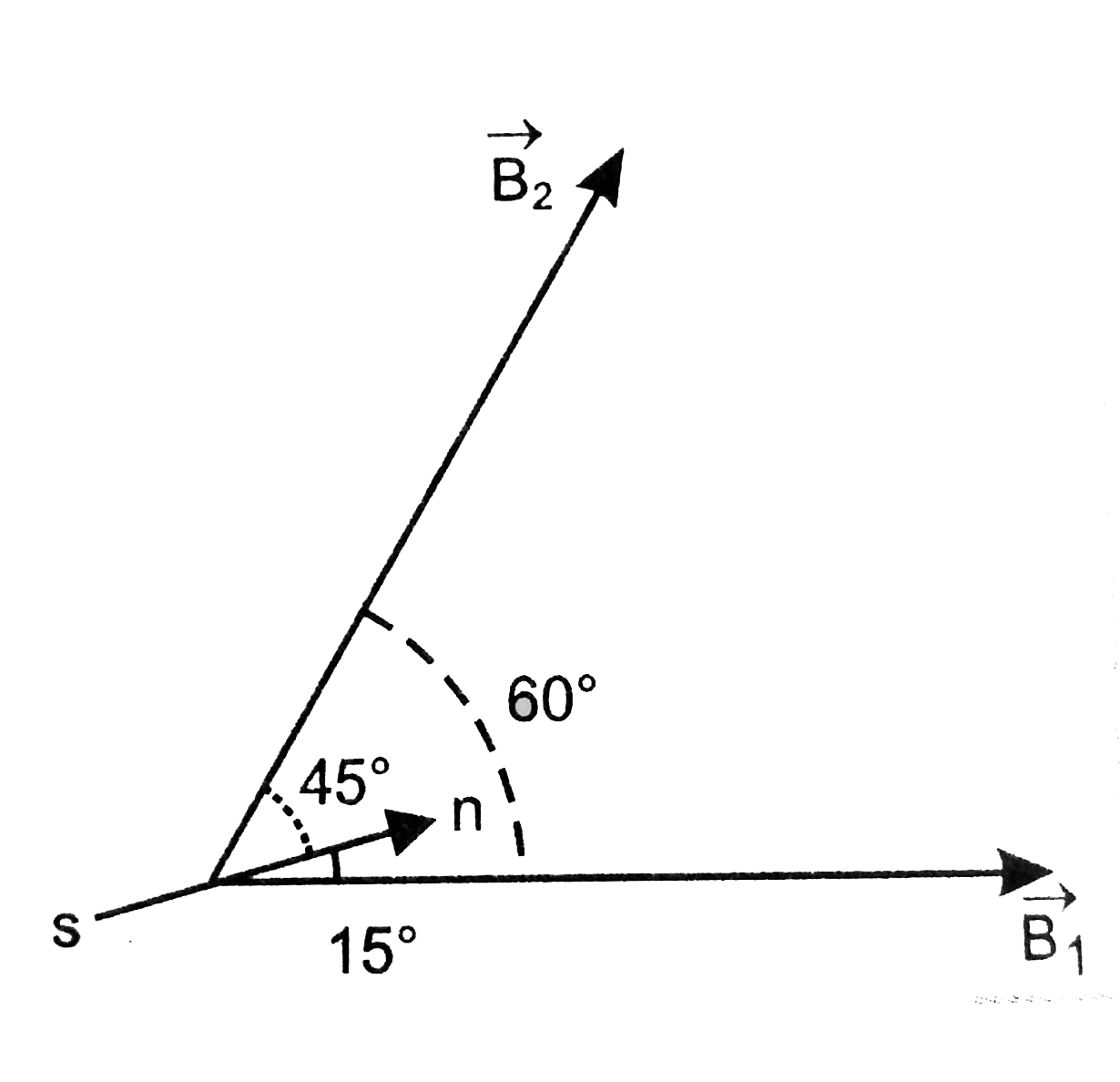A magnetic dipole is under the inflluence of two magnetic fields having an angle of 1200 between them. One of the fields has a magnitude 1.2×10−2T. If the dipole comes to stable equilibrium at an angle of 300 with this field, then magnitude of the other field is
8.484×10−2T
0.6×10−2T
4.242×10−3T
4.242×10−5T
The correct Answer is:B
B1sin30∘=B2sin90∘
Topper's Solved these Questions
- BOOK - NARAYNACHAPTER - MAGNETISM AND MATTEREXERCISE - EXERCISE - 2 (H.W)24videos
MAGNETISM AND MATTER
- BOOK - NARAYNACHAPTER - MAGNETISM AND MATTEREXERCISE - EXERCISE - 320videos
MAGNETISM AND MATTER
- BOOK - NARAYNACHAPTER - MAGNETISM AND MATTEREXERCISE - EXERCISE - 1 (H.W)30videos
MAGNETISM AND MATTER
- BOOK - NARAYNACHAPTER - MAGNETISMEXERCISE - LEVEL-II (H.W)24videos
MAGNETISM
- BOOK - NARAYNACHAPTER - MOVING CHARGES AND MAGNETISMEXERCISE - EXERCISE - 420videos
MOVING CHARGES AND MAGNETISM
Similar Questions
A magnetic dipole is under the influence of two magnetic fields. The angle between the field directions is 60∘ and one of the fields has a magnitude of 1⋅25×10−2T. If the dipole comes to stable equilibrium at an angle of 15∘ with this field, find the magnitude of other magnetic field.
View SolutionA magnetic dipole is under the influence of two magnetic fields. The angle between the two field directions is 60∘ and one of the fields has a magnitude of 1.2×10−2T. If the dipole comes to stable equilibrium at an angle of 15∘ with this field, what is the magnitude of the other field?
View Solution
Knowledge Check
- Question 1 - Select One
A magnetic dipole is under the influence of two magnetic fields. The angle between the field direction is 60∘ and one of the fields has magnitude of 1.2×10−2T. If the dipole comes to stable equilibrium at an angle of 30∘ with this Held, then the magnitude of the field is
A1.2×10−4TB2.4×10−4TC1.2×10−2TD2.4×10−2T - Question 2 - Select One
A magnetic dipole is under the influence of two magnetic fields. The angle between the field directions is 60∘ and one of the fields has a magnitude of 1⋅2×10−2 tesla. If the dipole comes to stable equilibrium at an angle of 15∘ with this field, figure, what is the magnitude of the other field?
 A4.4×10−3B4.4×10−4C4.8×10−3D4.4×103
A4.4×10−3B4.4×10−4C4.8×10−3D4.4×103 - Question 3 - Select One
A magnetic dipole is under the influence of two magnetic fields. The angle between the field directions is 60∘ and one of the fields has a magnitude of 1.2×10−2 T. If the dipole comes to stable equilibrium at an angle of 15∘ with this field, what is the magnitude of the other field?
A3(√3−1)×10−3TB(√3−1)×10−3TC6(√3−1)×10−3TD2(sqrt3-1)xx10^(-3)T
A magnetic dipole is under the influence of two magnetic fields. The angle between the field directions is 60∘, and one of the fields has a magnitude of 1.2×10−2T. If the dipole comes to stable equilibrium at an angle of 15∘ with this field, what is the magnitude of the other field?
View SolutionA magnetic dipole is under the influence of two magnetic fields. The angle between the field directions is 60∘ , and one of the fields has a magnitude of 1.2×10−2 T. If the dipole comes to stable equilibrium at an angle of 15∘ with this field, what is the magnitude of the other field ?
View SolutionA magnetic dipole is under the influence of two magnetic fields. The angle between the field directions is 60∘ and one of the fields has a magnitude of 1.2×10−1T. If the dipole comes to stable equilibrium at an angle of 30∘ with this field, then the magnitude of the field (in tesla) is x×102T. Find x,
View SolutionA magnetic dipole is under the influence of trwo magnetic fields. The angle between the two field directionss is 60∘ and one of the fields has a magnitudeo f1.2×10−2T. Of the dipole comes to stable equilibrium at an angle of 150 with this field, what is the magnitude of the other field?
View SolutionA magnetic dipole is under the influence of two magnetic fields. The angle between the field directions is 60∘ and one of the fields has a magnitude of 1.2×10−1T. If the dipole comes to stable equilibrium at an angle of 30∘ with this field, then the magnitude of the field (in tesla) is x×102T. Find x,
View Solution

